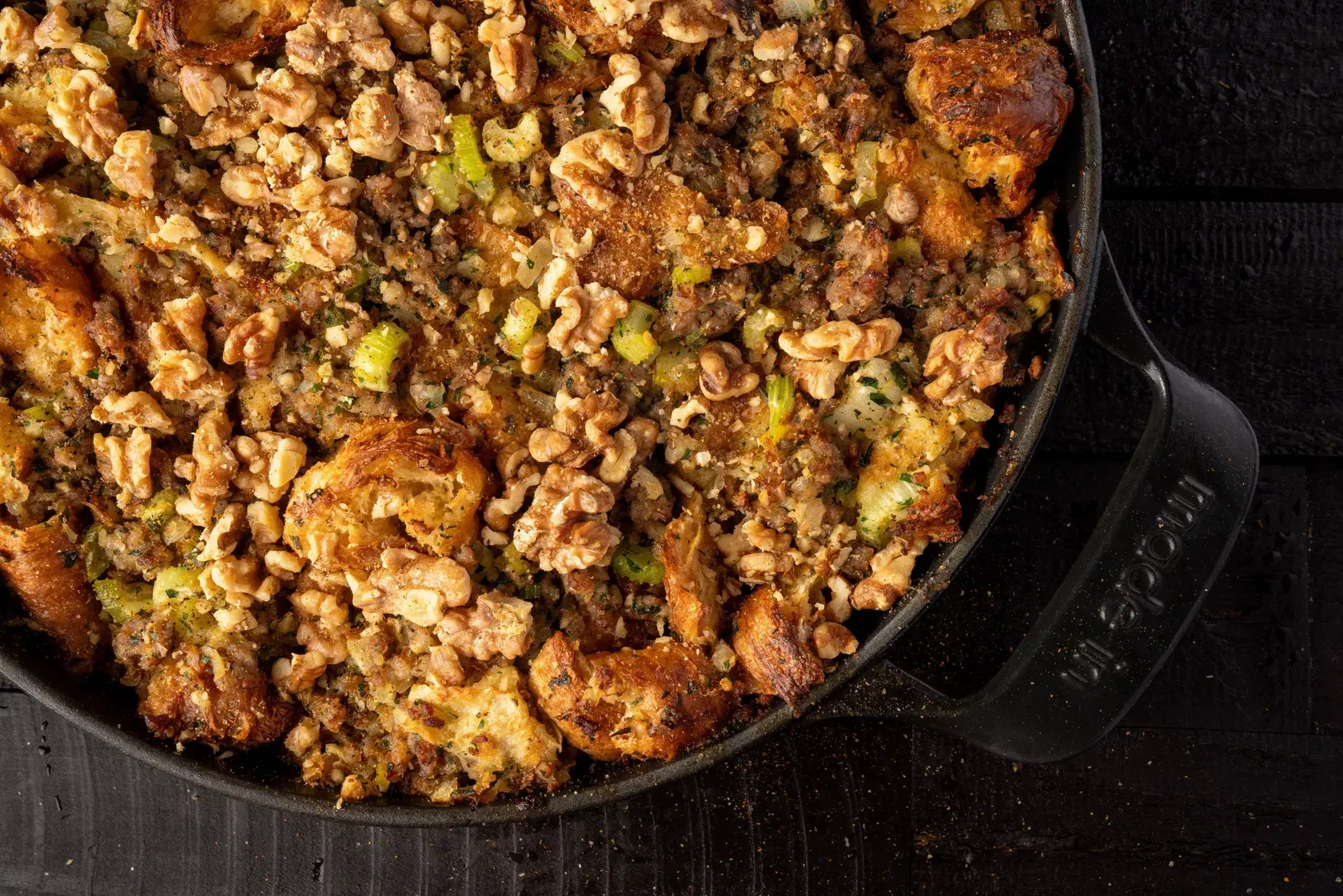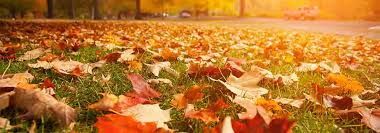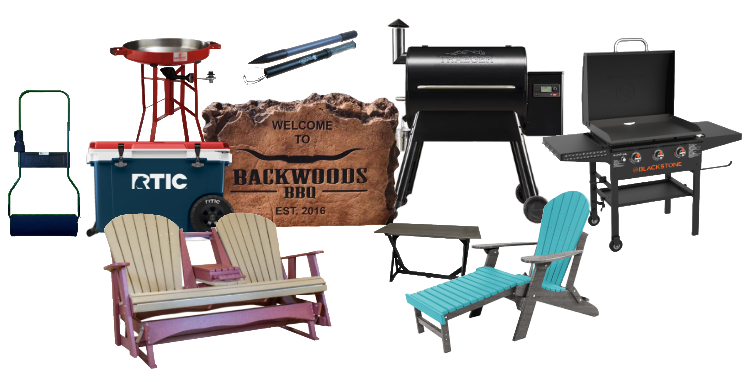Selecting and Maintaining Ornamental Grasses
Ornamental grass is gaining popularity for its hardy nature, visual impact, and benefits to local wildlife. Unlike traditional grass, ornamental grass comes in a variety of heights and colors, making it a versatile option for landscaping, hardscaping, and potted plants. If you're considering planting ornamental grass, we'll discuss important details to consider and the minimal care needed to keep it thriving.
Choosing the Right Ornamental Grasses for Your Garden

If you are already familiar with ornamental grass in your landscaping, feel free to skip ahead to our section on ornamental grass care. However, if you are new to these plants and interested in their beauty and ease of care, keep reading to discover how to choose the right ornamental grass for your garden. Ornamental grasses can spread, with some species being more aggressive than others. When selecting ornamental grasses, consider whether they are clump-forming or runners. Runners spread quickly and are ideal for covering large areas, while clump-forming grasses remain contained in neat mounds. Prioritize understanding the growth patterns and potential spread of each grass species to avoid any unwanted surprises in your yard.
Fast Growing Ornamental Grass
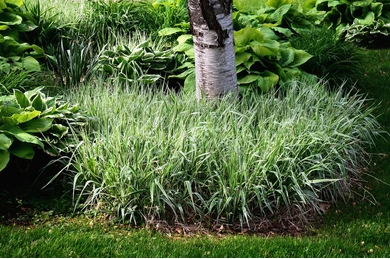
Fast-growing grasses, known as runners, can be a great option for filling low-maintenance spots with a visually impactful plant. Additionally, these runner grasses tend to be taller and more dramatic compared to clump-forming varieties. Popular runner grasses include Blue Lyme Grass, Prairie Cordgrass, and Ribbongrass. However, it is important to be cautious when planting fast-growing grasses, as non-native varieties have the potential to spread beyond your property, outcompeting native plants and exhibiting invasive qualities. To avoid these issues, consider planting native grasses that are not only fast-growing but also resilient to various environmental conditions, ranging from drought to flooding.
Slow Growing Ornamental Grasses
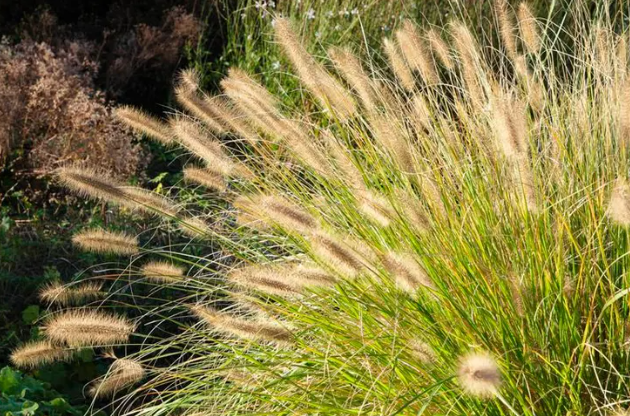
Caring for ornamental grass is a breeze when you don't have to constantly trim or weed it. To keep your landscaping and local flora undisturbed, opt for clumping varieties of grass. Not only do these types of grasses stay short and manageable throughout the growing season, they also expand over time to fill out a space without becoming invasive. Popular clump-forming grasses like fountain grass, maiden grass, and switchgrass are excellent choices for low-maintenance landscapes.
Which Ornamental Grasses Pair Well Together?
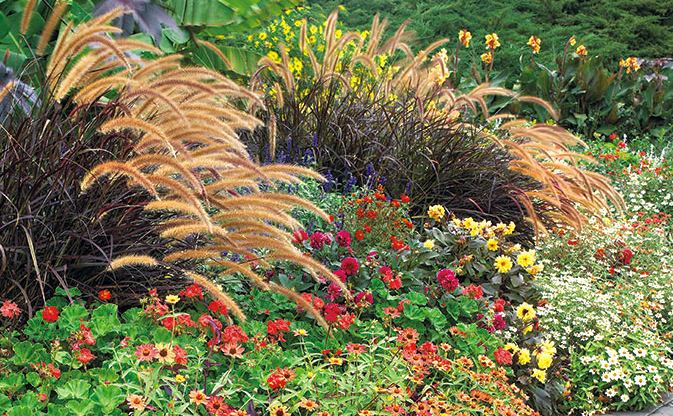
When pairing ornamental grasses, it is crucial to consider contrasts. Encircle tall grasses with short, clump-forming varieties. Combine grasses with striking catkins with those boasting sharp forms or bold attitudes. Contrasting colors guarantee a visually captivating display that will endure long after your flowers have faded.
What is the Easiest Ornamental Grass to Grow in Your Climate?
When it comes to grasses, they can be categorized into two main groups: warm-season and cool-season varieties. Warm-season grasses typically thrive in zones 3 to 11 and are known for being easier to cultivate. Despite their name, these grasses can withstand cold climates, but they flourish best in temperatures ranging from 80 to 90 degrees. The primary reason for their ease of growth compared to cool-season grasses lies in their superior drought tolerance. Drought-resistant options range from understated native Bluestem to extravagant and towering Pampas grass.
Nurturing Ornamental Grasses
Now that you have chosen the ideal grass for your project, caring for ornamental grasses can be relatively simple. Once established, most ornamental grasses require minimal watering and fertilizer, with grooming typically needed only once a year. Depending on the type of grass you have selected, your main task may involve preventing it from spreading uncontrollably and taking over your landscaping. Opting for clump-forming varieties can help maintain grass within a specific area, although some may try to spread via underground rhizomes. Diligent maintenance will assist in keeping them in check, allowing you to enjoy a well-maintained landscape.
When to Cut Back Ornamental Grasses
There are three main types of grasses with varying growing patterns. Evergreen grasses maintain growth throughout the year, slowing down in mid-winter. Warm-season grasses initiate growth in late spring, while cool-season grasses start growing in the spring before temperatures exceed 75 degrees. Long ornamental grasses are appreciated during winter for their seasonal interest and ability to provide habitat for animals. In climates with wet winters or fire concerns, cutting back may be done in late fall. Warm-weather grasses turn brown in winter but leaving them uncut can offer winter interest in the snow and provide seeds for wildlife. Cool-weather grasses may continue growing through mild winters. Therefore, most ornamental grasses should be trimmed back to 6 to 10 inches in early spring before new growth begins.
Maintaining and Trimming Ornamental Grasses
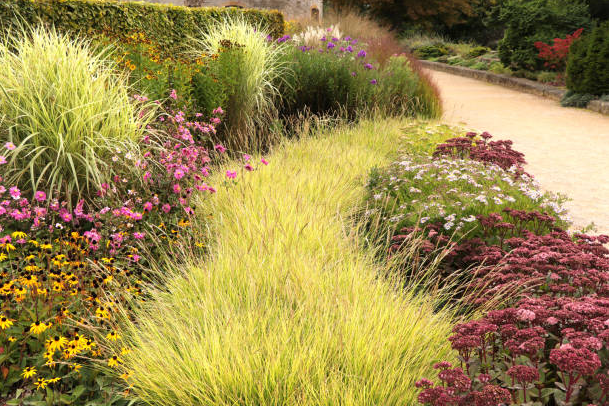
Before cutting back ornamental grasses, ensure your protection by wearing thick gloves and eye gear, as the long grass can be unexpectedly sharp. To simplify the cutting process and save your back, use a bungee cord and hedge trimmer. Place the cord around the base of a grass clump, securing it into a tidy bundle. Proceed to trim the grass evenly to your preferred height with the hedge trimmer. To streamline cleanup, collect the clippings in a bucket or wheelbarrow as you go. Most ornamental grasses should be pruned annually, excluding evergreen varieties like Fescue and Blue Oat Grass, which do not go completely dormant. If evergreen ornamental grasses start to appear unkempt with dead or dying strands, they require combing out and removal of brown stems.
Grooming Ornamental Grasses
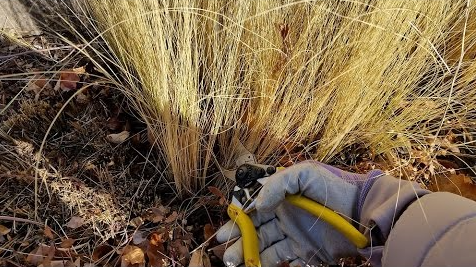
Maintaining ornamental grasses involves periodic combing to eliminate dead and dried-up stems. The process is straightforward: wear gloves to protect your hands from sharp grass strands, then gently comb through the grass clump with your fingers. Shake the grass to reveal any hidden dead strands and remove them by pulling away at the base. For cleanliness, carry a container to collect the discarded strands as you groom.
Caring for Biennial Ornamental Grass
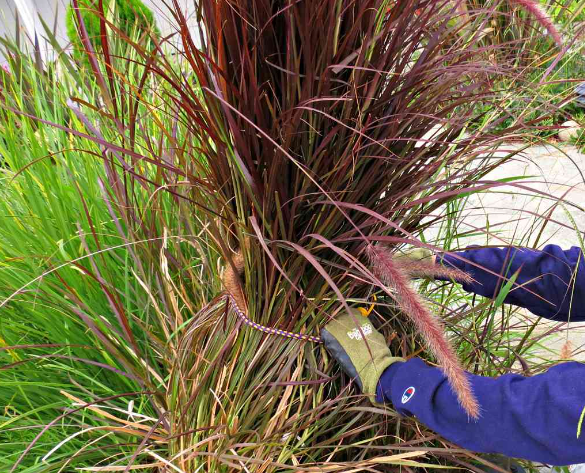
Every two to three years, clumps of ornamental grasses may need to be divided to rejuvenate their growth and fill in empty spaces in your landscape. Dividing should ideally be done in early spring, but there are some exceptions. Warm-season grasses can also be divided in mid-summer before they flower, while cool-season grasses can be divided in early fall. Give your grass time to recover before the onset of winter to ensure a healthy display in the following growing season.
How to Divide and Transplant Ornamental Grasses

Before dividing your grass, ensure that you catch it while it's actively growing but before it flowers to prevent potential root system issues. To divide the grass evenly, remove the entire grass clump by digging around it with a sharp shovel, cutting through some roots. Lift the grass and roots, then set it aside. Use a garden knife or saw to cut down the middle of the root ball and divide it into segments, each with some roots intact. Consider the original spot's size before dividing the entire clump to determine how much grass to keep in the area. Transplanting divided or obtained decorative grass cuttings is a straightforward process. Dig a hole twice the width of the grass roots, and mix the soil with compost instead of fertilizer. Cover the grass with its roots at the base of the crown, water immediately after planting, and continue watering until the plant is well-rooted.
Tending to Potted Decorative Grasses
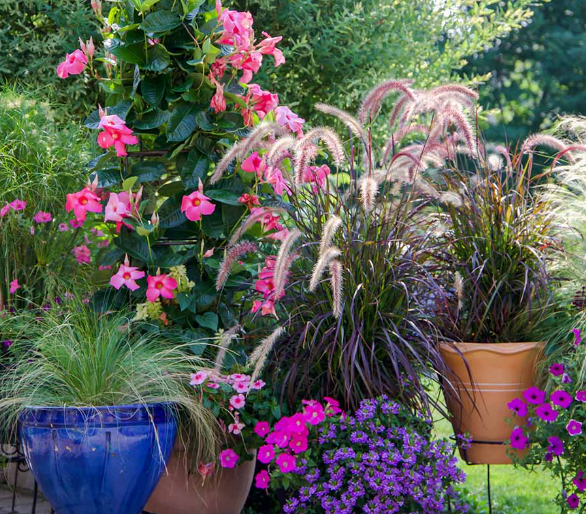
Grass is a versatile and appealing option for enhancing small outdoor areas like patios, pool decks, and balconies. Potted ornamental grasses can effortlessly bring a touch of greenery and elegance to any space. While caring for decorative grass in containers is generally straightforward, it is essential to note a few key differences. In regions with cold winters, it is advisable to relocate containers to a sheltered spot like a garage during the colder months. Additionally, ensure that ornamental grasses receive a deep watering every two to three weeks to maintain their health and vitality.
For more tips click here or give us a call at 580-886-2345 for more information on what equipment is right for your lawn!
Share Our Blog Post(s) However You'd Like!
Contact
Contact Us





